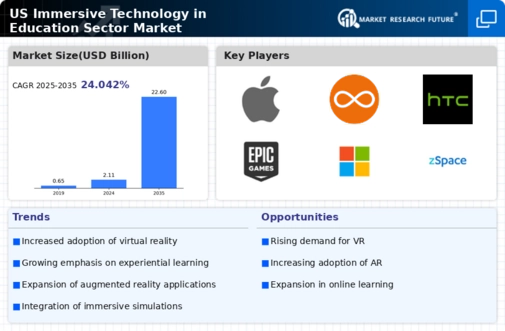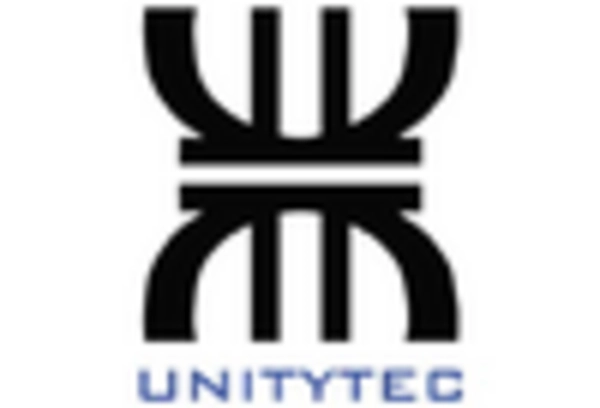Increased Focus on STEM Education
The immersive technology-in-education-sector market is benefiting from an increased focus on STEM (Science, Technology, Engineering, and Mathematics) education. As the demand for skilled professionals in these fields rises, educational institutions are integrating immersive technologies to provide hands-on learning experiences. Research indicates that students engaged in STEM subjects through immersive methods demonstrate a 20% higher retention rate compared to traditional learning approaches. This trend is prompting schools to invest in immersive tools that facilitate experiential learning, thereby enhancing students' problem-solving and critical-thinking skills. Consequently, the immersive technology-in-education-sector market is likely to see sustained growth as it aligns with the national emphasis on improving STEM education.
Supportive Government Initiatives and Funding
Supportive government initiatives and funding are playing a crucial role in the growth of the immersive technology-in-education-sector market. Various federal and state programs are being implemented to promote the integration of technology in education, with a focus on immersive solutions. For example, the U.S. Department of Education has allocated over $200 million in grants to support innovative educational technologies. These initiatives not only provide financial assistance but also encourage collaboration between technology developers and educational institutions. As a result, the immersive technology-in-education-sector market is likely to benefit from increased investment and resources, fostering a more conducive environment for the adoption of immersive learning tools.
Rising Demand for Engaging Learning Experiences
The immersive technology-in-education-sector market is experiencing a notable surge in demand for engaging learning experiences. Educational institutions are increasingly recognizing the potential of immersive technologies, such as virtual reality (VR) and augmented reality (AR), to enhance student engagement and retention. According to recent data, approximately 70% of educators believe that immersive technologies can significantly improve learning outcomes. This growing acceptance is driving investments in immersive solutions, with the market projected to reach $10 billion by 2027. As schools and universities seek innovative ways to captivate students, the immersive technology-in-education-sector market is likely to expand rapidly, fostering a more interactive and stimulating educational environment.
Technological Advancements in Hardware and Software
Technological advancements in hardware and software are propelling the immersive technology-in-education-sector market forward. Innovations in VR headsets, AR applications, and interactive software are making immersive learning more accessible and affordable for educational institutions. For instance, the cost of VR headsets has decreased by nearly 30% over the past few years, making them more feasible for schools to adopt. Furthermore, the development of user-friendly software platforms allows educators to create customized immersive experiences tailored to their curriculum. This evolution in technology not only enhances the learning experience but also encourages broader adoption across various educational levels, indicating a robust growth trajectory for the immersive technology-in-education-sector market.
Growing Emphasis on Remote and Hybrid Learning Models
The growing emphasis on remote and hybrid learning models is influencing the immersive technology-in-education-sector market. As educational institutions adapt to diverse learning environments, immersive technologies are being utilized to create interactive and engaging online experiences. Data suggests that approximately 60% of educators are exploring immersive tools to enhance remote learning. This shift is prompting the development of innovative solutions that cater to both in-person and online learners, thereby expanding the market's reach. The immersive technology-in-education-sector market is likely to thrive as it addresses the evolving needs of educators and students in a rapidly changing educational landscape.

















Leave a Comment